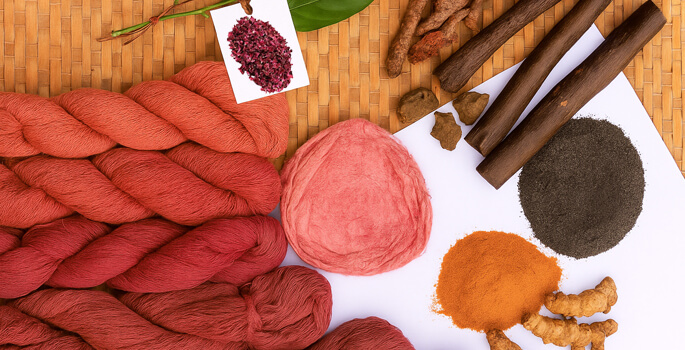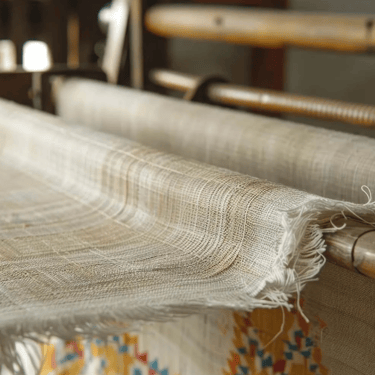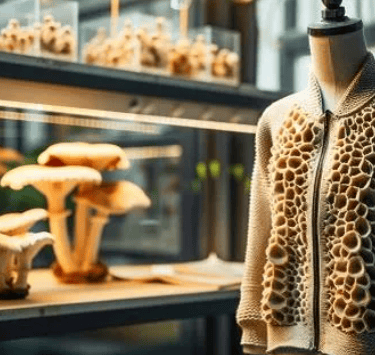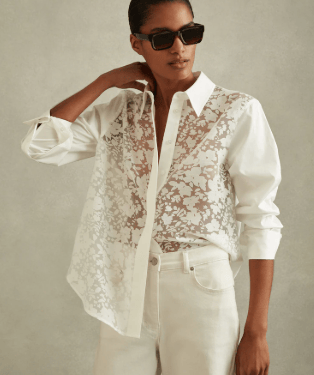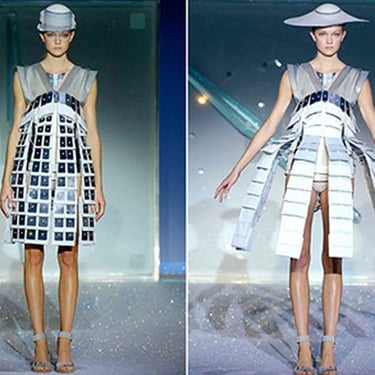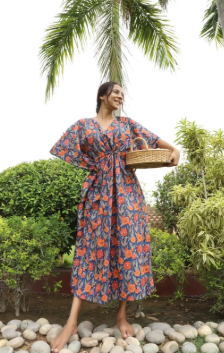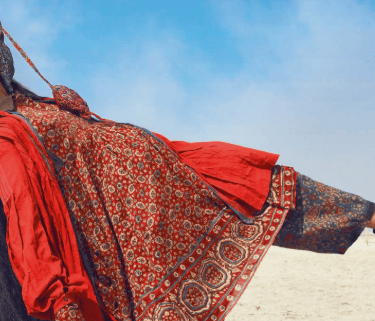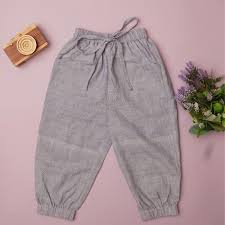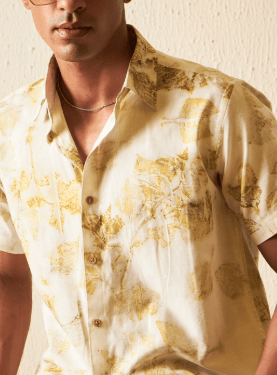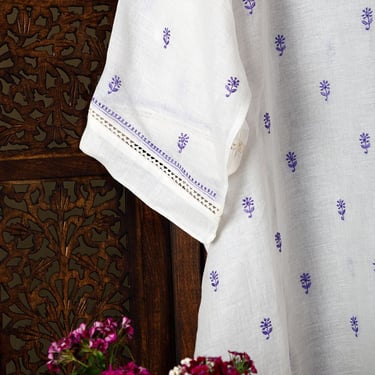2025’s Most Influential Fashion Trends: Sustainable Sheer, Tech-Craft, and What’s Next in 2026?
Here are some of 2025's Most Influential Fashion Trends from the year. A world where tech and AI are shifting almost everything, including fashion! From semi-naked silhouettes to AI-stitched statements, 2025’s trends are rewriting the rules of style. Welcome to fashion’s bold new era.
11/11/20254 min read


If 2024 flirted with sustainability, 2025 made it the main character. As we edge toward the end of the year (yes, already), fashion’s narrative is clearer than ever: mindful is the new modern, roots are the new luxury, and innovation is the new indulgence!
In this article, we delve into 2025's Most influential Fashion Trends, that are more likely to take their entry on the coming year as well. Some of which include the trends that shaped runways, wardrobes, and every stylish scroll on your feed—and a glimpse into what 2026 is hinting at.
Transparency Is More Than a Trend: Sheer Done Sustainably
Sheer dressing in 2025 wasn’t your usual flirtation with translucency—it was a quiet, confident declaration. We’re talking handwoven organza that feels like poetry, upcycled mesh with a conscience, and naturally dyed tulle that whispers rather than shouts.
Designers finally ditched plastic-heavy synthetics for biodegradable materials and refreshingly transparent production practices.
Think translucent co-ords woven by women’s cooperatives in Bengal, barely-there shirts tinted with plant pigments, and layering that reveals more than skin; it reveals intention. This year, see-through wasn’t scandalous. It was sincere. It exhibited the subtle power for its recognition, and designers have well respected its significance.
Futurewear With a Conscience, Sci-Fi Meets Slow Craft
Metallics and 3D silhouettes strutted into 2025 with attitude—but this time, they came with a sustainability handbook.
Space-age fashion got greener:
With AI-assisted zero-waste cutting, digitally prototyped garments, and Biodegradable “space mesh” textiles
Yes, futurism got ethical!
Imagine a metallic sari spun from banana fibre, recycled-foil jackets that catch the sun and your conscience, or accessories printed with corn-based bioplastics. The aesthetic may be interstellar, but the ethos? Entirely earth-first.
Reimagined Comfort: Soft Power, Strong Roots
Comfort dressing has upgraded itself this year. No more lazy loungewear masquerading as ‘effortless.’ In 2025, comfort came sculpted, structured, and rooted in heritage.
Oversized silhouettes embraced heirloom craftsmanship. Paris flirted with Jaipur( Block-printed blazers); Milan borrowed from Kutch, Ahimsa silk co-ords, Khadi Joggers, Draped kaftans woven by artisans loved across the globe
It’s comfort with credibility. Ease that earns its elegance.
Florals, But Make Them Ancestral
Florals bloomed—again. But this time, they returned with a PhD in heritage.
Designers unearthed vintage botanical illustrations, revived natural dye palettes, and painted petals inspired by native flora. This wasn’t the ditsy floral of fast fashion; this was botanical storytelling.
Hemp shirts sporting rose motifs
Jacaranda blooms embroidered in Chikankari
Eco-ink petals with a slightly dystopian charm
2025 reminded us: florals aren’t feminine—they’re foundational.
Driving towards a more Purposeful Tailoring Approach
Tailoring stripped down to its essence this year. No shortcuts, no rushed seams, no thoughtless silhouettes. Just craftsmanship, clean lines, and quiet luxury.
We saw:
Trench coats from repurposed cotton
Hand-stitched denim saris
Jackets lined with second-life fabrics
Think minimalism—but with meaning, not monotony. The kind of tailoring that becomes heirloom rather than landfill.
Tech x Tradition: Craft-Driven Innovation Takes Over
Digital fashion evolved from novelty to guardian of legacy. Of course, it has its con(s) but what we must do as preservatives is embrace this advance movement and use it righteously. AI preserved fading art forms, virtual motifs were block printed only after digital testing, such virtual prototypes to reduce waste, and supply chains became traceable from seed to stitch. Even, Handloom NFTs, supporting weavers. Digital fashion finally redeemed its reputation. In 2025, tech wasn’t here to replace artisans—it was here to preserve them
Vibe Check, But Make It Value-Driven
If 2025 had a motto, it would’ve been: “Dress like you mean it.”
On social media, people didn’t ask “what’s trending?” They asked, “what aligns?”
Creators embraced:
#MindfulMondays outfits
#MoodboardForEarth aesthetics
Thrifted brunch sarees
Climate-march-ready jumpsuits
Slow fashion hauls with zero shame and maximum charm
Fashion wasn’t performance. It was personal ethics woven into personal style.
What 2026 Is Quietly Hinting At
2025 gave us clarity; 2026 promises evolution. Based on current signals (and the subtle whispers from designers, tech innovators, and textile anthropologists), here’s what’s brewing:
1. Bio-Materials Go Mainstream
Biotech will become even more central: expect mushroom (mycelium) leather, algae-based fabrics, and other lab-grown fibers to gain serious ground. They will capture the fashion market, and people are already loving it.
Regenerative fibres like hemp, banana, and lotus will rise thanks to eco-conscious agriculture. You can also expect tie-dye/natural dye to step fully into the spotlight.
2. Digital Product Passports Become Standard
Garments will increasingly carry scanable digital passports (DPPs), revealing their entire lifecycle: from materials to workers. Scan your sleeve, know your supply chain—this will be the norm. Moreover, Blockchain traceability will continue to gain traction, helping brands substantiate their sustainability claims
3. Fluid Tailoring Takes Over
Tailoring will soften: structured silhouettes will loosen, favoring fluid, relaxed cuts. Textiles will emphasize authenticity by including raw denim, woven linens, and hand-knit textures to show their "story" Tailoring with Soft suits, liquid drapes, and silhouettes that adapt to the body rather than impose structure will become more trendy.
4. Circular Fashion Isn’t a Niche Anymore
Remember the 3Rs you read in school? Fashion has its own- Recycling, upcycling, renting—circularity, which becomes a default expectation in the big name companies already!
5. Smart Fabrics Get Smarter
As the technology is advancing each year, so are the machinery and systems. Responsive fibres, temperature-regulating weaves, and embedded-sensor textiles are inching toward accessibility.
6. Craft Comes Back With Fire
Yes! We are not losing on our age-old traditions. Block prints, intricate weaves, natural dyes - 2026 will see craft not as nostalgia but as luxury. Surprisingly, the Gen-Zs and Gen-beta (most likely) are going to be the generation promoting crafts for its revival, and brands can't resist but adapt to this much-needed move.
7. Ethical Embellishments
This year's Runway has it all, from the intricate mukaish work to the feathers, sequins, and trims - all reinvented with cruelty-free, biodegradable alternatives.
2026 won’t just extend the sustainability wave. It will deepen it.
Final Threads
2025 taught us that fashion doesn’t have to shout to be powerful - it just has to be purposeful. Sheer became sincere. Metallics found meaning, Comfort rediscovered its craft, and technology finally learned to respect tradition.
As we step into 2026, the future of fashion looks rooted, responsible, and irresistibly radiant.
Because the most compelling style isn’t fast, flashy, or fleeting.
It’s the kind that’s built to last—emotionally, ethically, and exquisitely.


